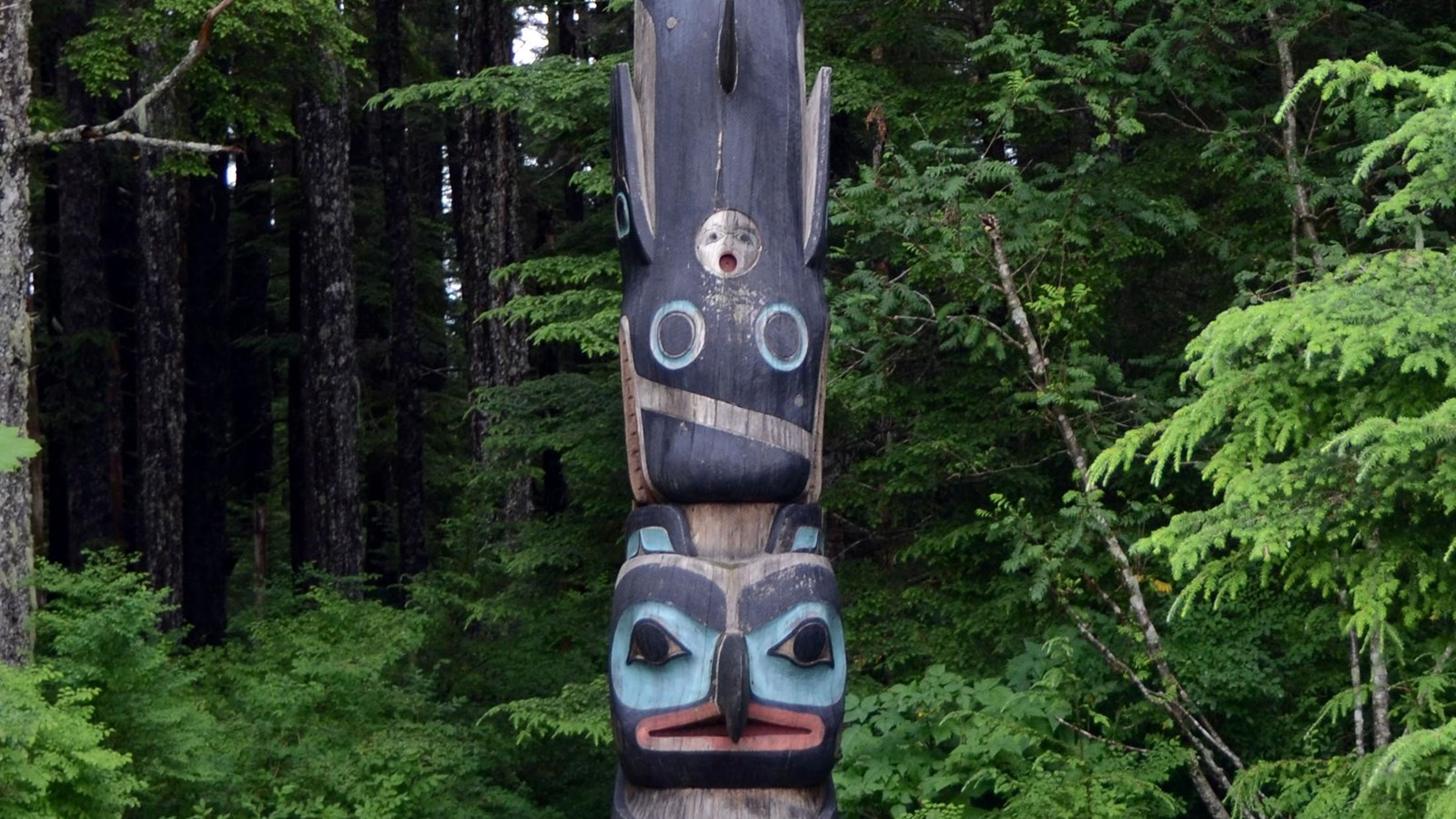Last updated: October 10, 2024
Place
Gaanax.adi - Raven Crest Pole

Sitka National Historical Park NPS
Wheelchair Accessible
This Tlingit pole was obtained from Chief Gunyah, in the former Tlingit village of Tuxekan on Prince of Wales Island. The pole was recarved in 1983 by Nathan Jackson (Yéilch Ya’di) and Steve Brown (Kaajísdu.áxch). Jackson and Brown used early photographs by E. W. Merrill from the Park collection to reproduce the details of the original pole. The Civilian Conservation Corps recarving of the same pole is in the covered Totem Preservation Exhibit near the upper trailhead of the Totem Loop Trail.
This pole is most likely a clan crest pole, which depicts the origin of the clan and its crests.
- The pole is 32 feet tall, 2 feet 4 inches wide and 3 feet thick.
- The bottom figure is a bird, perhaps a Thunderbird, depicted with a short, hooked beak and “ears” on its head, it is painted black with blue-green around the eyes and has red lips.
- Above that is a killer whale. The whale is black and has blue-green circles around the eyes, a small round face in the blowhole, a dorsal fin and its tail is tipped toward the viewer.
- Atop the whale is Raven, black with blue green around the eyes.
- Next up the pole is a frog, facing downward. Frog is green with large round eyes, a wide mouth and has spots on its back.
- Sitting above Frog is a human holding an unpainted stick, perpendicular and centered on its body. The human’s body is red, it has blue green around black eyes and a red mouth.
- The top figure is Raven, black with long beak, holding an unpainted crescent moon with its foot.
Totem poles are expressions of the values, character and experiences of the clans who hosted the potlatches to raise the poles. More important than physical possessions of the Tlingit and Haida are their crests. Anytime and anywhere crests are used, whether on blankets, tunics, hunting tools, spoons or other utilitarian objects, the crests are public record of who owns the item. In this traditional system, it speaks to the history of the people, as those items are passed on from one generation to the next.
